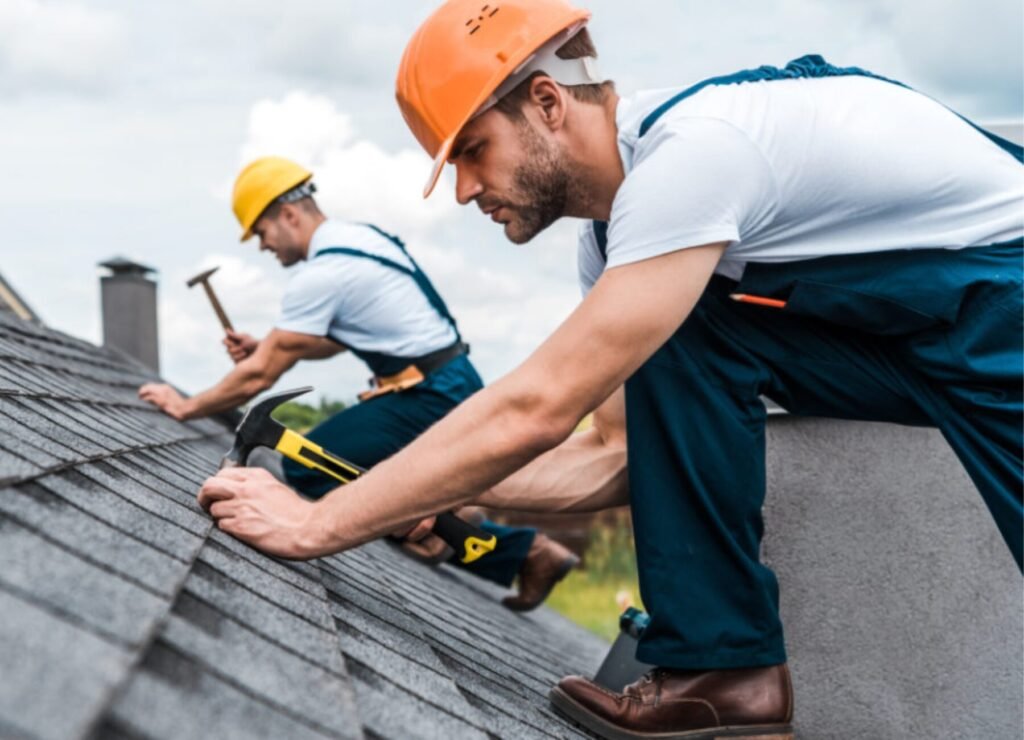Before replacing a roof, consider factors like budget, materials, and climate suitability. Assess the roof’s structure for repairs, choose durable materials, and explore warranties. Hiring a reliable contractor ensures quality work and compliance with local codes. Proper planning helps avoid delays and unexpected costs and provides long-term protection.
Introduction
Maintaining a robust and functional roof is essential for safeguarding your home from the elements. Regarding significant home improvements, replacing your roof can significantly enhance your property’s structural integrity and overall aesthetic appeal. This process isn’t just about matching shingle colors to your shutters; it’s about making informed choices that will affect your home’s durability and energy efficiency for decades. Undertaking a commercial roof replacement or any substantial residential project requires careful planning and consideration of multiple factors.
Replacing your roof is a repair and an opportunity to improve your home’s safety and efficiency. Understanding all factors, from material choice to installation timing, is crucial for a transformative journey.
Signs It’s Time to Replace Your Roof
Mold poses a significant health hazard that may result in allergies, chronic fatigue syndrome, and respiratory issues. Common indicators include:
- Persistent leaks.
- Mold or mildew.
- Visible sagging in the roof deck.
- Missing or damaged shingles.
- Underlying roof support issues.
Routine inspections, ideally twice a year, can find problems early and prevent structural damage. Addressing these problems promptly can prevent more extensive damage and avoid turning a simple roof replacement into a complex, costly repair job. Regular inspections are essential for maintaining optimal roof condition and preventing expensive repairs.
Selecting the Right Roofing Material
Choosing the suitable roofing material is crucial for your home’s longevity and aesthetics. Asphalt shingles are well-known for being reasonably priced, simple to install, and providing dependable weather protection. Metal roofing is known for its durability and sustainability, lasting up to 50 years or more. Despite higher initial costs, metal roofs can save on heating and cooling costs over time. Factors to consider include local climate, budget constraints, and desired aesthetics. Clay tiles balance charm and durability for those seeking historical authenticity. Each material has its unique features that cater to different needs and preferences.
Budgeting for Your Roof Replacement
Any home improvement job, especially one as significant as replacing the roof, requires setting a reasonable budget. The price might vary significantly depending on labor, material selection, and the possibility of unanticipated repairs like rotting roof decking or old insulation. Obtaining multiple quotes from reputable contractors is advisable to get an accurate estimate that fits within your financial plan.
Additionally, setting aside a contingency fund of 10-15% of the total cost can help manage unforeseen expenses without disrupting your plans. This could include costs like municipal permits or upgrading to more advanced materials as the project progresses. Thorough financial planning ensures the project runs smoothly without unnecessary delays or financial strain. Factor in potential savings from increased energy efficiency with higher-end materials, which can offset upfront costs over time.
Considering Environmental Impact
As sustainability becomes increasingly important, many homeowners opt for eco-friendly roofing solutions. These can range from recycled shingles to green roofs that provide insulation and promote biodiversity. By improving your home’s thermal efficiency, using sustainable materials may save a lot of energy while lessening your influence on the environment.
The EPA’s standards state that using sustainable materials may improve the resale value of your house and provide a better living environment. For example, adding solar tiles to your roof can save electricity expenses while utilizing renewable energy to power your house. Such choices reflect a commitment to environmental stewardship and forward-thinking home management.
Timing Your Roof Replacement
Time is of the essence when it comes to roof replacement. Work conditions during spring and fall are often ideal due to more moderate weather, reducing the risk of weather-related work delays and complications. Extreme temperatures can affect the sealants used on your roof, impacting the integrity of the finished product.
When planning your project timeline, consider local climate patterns and consult your contractor about the optimal timing. This strategic scheduling will minimize disruptions to your daily routine, ensuring the replacement process is as swift and efficient as possible. The result will be a durable roofing solution that stands the test of time.
Frequently Asked Questions
How long does roof replacement take? Typically, the duration can vary depending on the roof’s size and complexity, ranging from a few days to over a week for more extensive installations. Weather conditions and any unforeseen repairs can extend this timeframe.
What maintenance is required post-installation? Regular maintenance is crucial for prolonging your new roof’s lifespan. This includes cleaning gutters regularly, inspecting for any damage or debris, and scheduling professional inspections every few years to catch potential issues early on.
Conclusion
Changing out your roof is a substantial monetary commitment for the long-term well-being of your home. However, you can achieve a successful and stress-free renovation by considering suitable materials, budgeting effectively, and timing your project wisely. Thorough and informed decision-making during the planning stages ensures your new roof is beautiful and functional, providing protection and peace of mind for many years. These steps facilitate a seamless transition to a new roof, enhancing your home’s safety and value.


